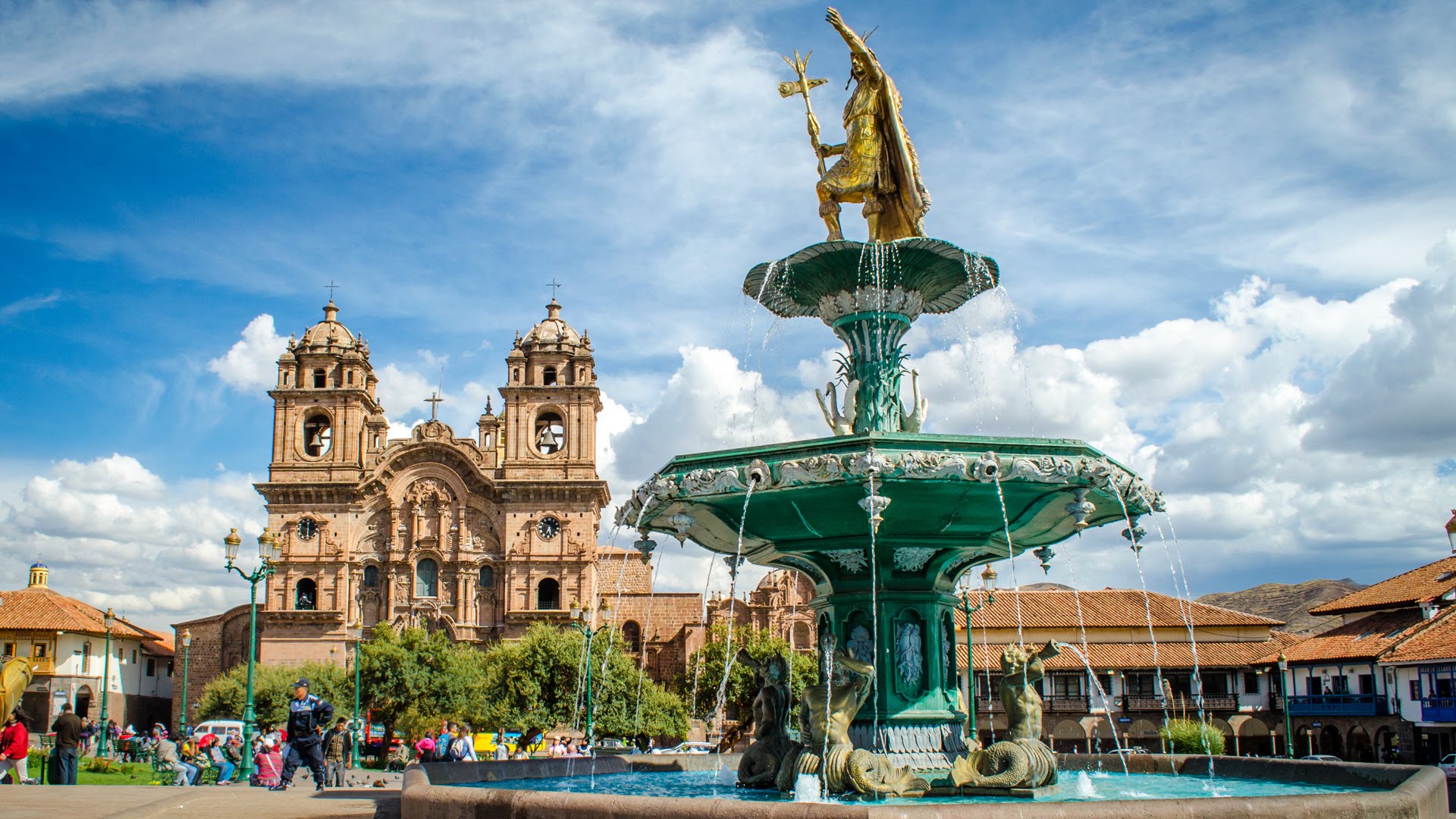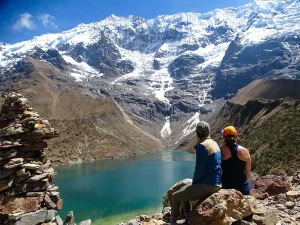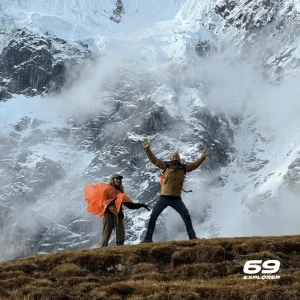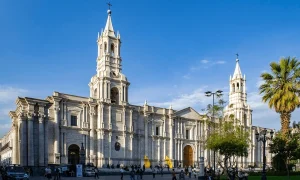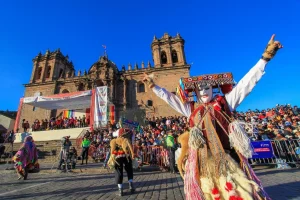Cusco is one of the most historically and culturally significant cities in South America. Its origins trace back to pre-Inca settlements that established early agricultural and religious traditions in the Andes. The city later became the capital of the Inca Empire, planned with remarkable urban design and monumental architecture.
Following the Spanish conquest in the 16th century, Cusco was reshaped with colonial churches, convents, and plazas, creating a unique blend of Andean and European influences. In the past few decades, Cusco has grown into a major hub for international tourism, serving as both a gateway to Machu Picchu and a destination itself.
Culturally, Cusco remains deeply rooted in tradition. Throughout the year, it hosts parades and religious processions such as Inti Raymi and Corpus Christi, alongside contemporary concerts and cultural events. Its cuisine reflects a fusion of ancient Andean ingredients with modern Peruvian gastronomy, making it one of the country’s culinary centers.
Local artisans, particularly weavers and silversmiths, continue to practice centuries-old crafts that are widely showcased in the city’s markets and workshops. Together, these elements make Cusco a place where history and culture are constantly alive and accessible to visitors.
Weather
Cusco’s high altitude setting at 3399 m (11152 ft) gives it a cool, dry climate with clear seasonal contrasts. The dry season, from May to October, brings mostly sunny days with daytime temperatures averaging 18-20 °C (64-68 °F) and cold nights that can drop close to 0 °C (32 °F). This is the most popular time to visit, with stable weather for city walks, archaeological site visits, and day trips to the Sacred Valley. It is also the prime trekking season for those heading to Machu Picchu or nearby routes.

The rainy season runs from November to April, with daytime temperatures slightly warmer, averaging 18-22 °C (64-71 °F), and nights around 7-9 °C (45-48 °F). Rain usually falls in short, intense bursts, especially in January and February, though mornings are often clear. While trekking routes may be muddy or occasionally restricted, this is a good time to enjoy Cusco itself. You can go exploring its museums, markets, and colonial streets to joining cultural events and culinary tours. The rainy months also have fewer crowds and lower prices, making the city more relaxed and accessible.
History
Pre-Inca
Long before the rise of the Incas, Cusco’s valley was inhabited by various Andean groups, including the Marcavalle, Chanapata, Qotakalli, and Killke cultures, who lived here from around 1000 BCE to 1200 CE. These peoples were primarily agricultural, cultivating corn and potatoes, and laid the foundations for urban development. The Killke, in particular, are credited with building early fortifications and religious structures, some of which were later incorporated into Inca architecture.
Inca
By the 13th century, the Incas had consolidated control over the valley, transforming Cusco into the capital of their empire, Tawantinsuyo. Under rulers like Pachacútec and his successors, the city was carefully planned in a puma-shaped layout, with finely engineered stone buildings such as the Qorikancha (Temple of the Sun) and the fortress of Sacsayhuamán. For nearly 300 years, Cusco served as the political, religious, and cultural center of the empire, until the Spanish conquest in the 1530s.
Colonial
With the arrival of the Spanish, Cusco underwent a profound transformation marked by cultural overlap. Indigenous temples and palaces were demolished or repurposed, with churches and convents built atop Inca foundations, the Santo Domingo Convent over Qorikancha being a prime example.
Catholicism was imposed, but often blended with Andean beliefs, creating unique forms of religious expression still seen in festivals today. Language followed a similar path: Spanish became dominant, yet Quechua endured as a spoken language, especially in rural areas.
Colonial art, particularly the Cusqueña School of painting, also reflected this fusion of European styles and indigenous symbolism.
Recent
In the 20th century, Cusco began to reinvent itself as a cultural and touristic hub. After Machu Picchu’s “rediscovery” in 1911, Cusco became increasingly connected to international travelers. Over the past few decades, the city has balanced heritage preservation with modern development, investing in infrastructure while safeguarding its archaeological and colonial legacy.
Today, tourism is Cusco’s main economic driver, and local communities have become active participants, offering homestays, artisanal markets, and cultural experiences. This evolution has allowed Cusco not only to thrive economically but also to strengthen pride in its identity as the “navel of the world.”
Travelling to Cusco
Cusco is well connected and accessible by air, land, and rail, offering options to match different travel styles and budgets.
By Air
Alejandro Velasco Astete International Airport, located just 10 minutes from the historic center, is the main entry point. Most visitors arrive via domestic flights, with Lima-Cusco being the most popular route, taking just over an hour. There are also frequent connections from Arequipa, Juliaca (Lake Titicaca), and Puerto Maldonado (gateway to the Amazon).
International flights are limited but growing, with direct services from cities like La Paz, Santiago de Chile, and Bogotá, depending on the season.
By Bus or Car
Cusco’s land terminal connects the city to major destinations across Peru. The trip from Lima takes around 20-22 hours by bus, compared to a quick flight, but is significantly cheaper, with fares starting at a fraction of airfare. From Arequipa, the journey is shorter, averaging 10-12 hours, making it a common overland route. Long-distance buses vary widely in comfort and price, with luxury services offering reclining seats, meals, and onboard entertainment.
By Train
Arriving in Cusco by train is less common but offers a scenic, touristic experience. The route from Puno crosses the Andean highlands in about 10 hours, blending travel with cultural immersion and landscapes.
Luxury services also connect Cusco with Arequipa, combining transportation with a curated journey of fine dining, panoramic wagons, and guided experiences. While slower and more expensive than flights or buses, trains are ideal for travelers who want the journey itself to be part of the adventure.
Price comparison
By Air
Domestic flights, especially Lima-Cusco, are the fastest way. One-way fares can start around USD $39-70 for basic economy, depending on airline and time.
Round-trip fares might run about USD $80-120 or more, depending on how early you purchase.
By Bus or Car
From Lima to Cusco by bus, journey time is about 22 hours.
Ticket prices are (one-way) in the range of USD $25-$60, depending on the bus company, bus class (semi-cama, salón cama, VIP), and amenities.
By Train / Luxury Tourist Options
The train route from Puno to Cusco is a scenic option. Travel time is around 10-12 hours.
Ticket prices for this scenic or luxury train service are significantly higher: starting around USD $240 one-way, and for all-inclusive or premium experiences the cost can rise further.
For instance, the “Titicaca Train” all-inclusive journey (with meals, performance, etc.) is around USD $499 per person.
Points of interest
Archaeological Sites
Cusco is filled with Inca ruins integrated into the cityscape. The Qorikancha (Temple of the Sun), once the most important Inca temple, still shows its finely cut stonework beneath the colonial Santo Domingo convent. On the outskirts, the fortress of Sacsayhuamán impresses with its massive walls and panoramic views of the city. Smaller but notable sites like Qenqo, Pukapukara, and Tambomachay complete the archaeological circuit accessible just minutes from the center.

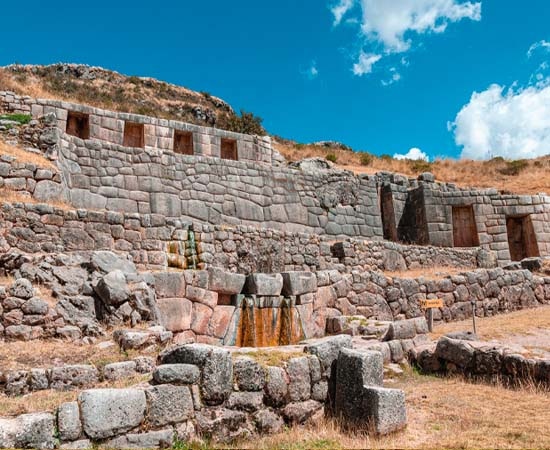
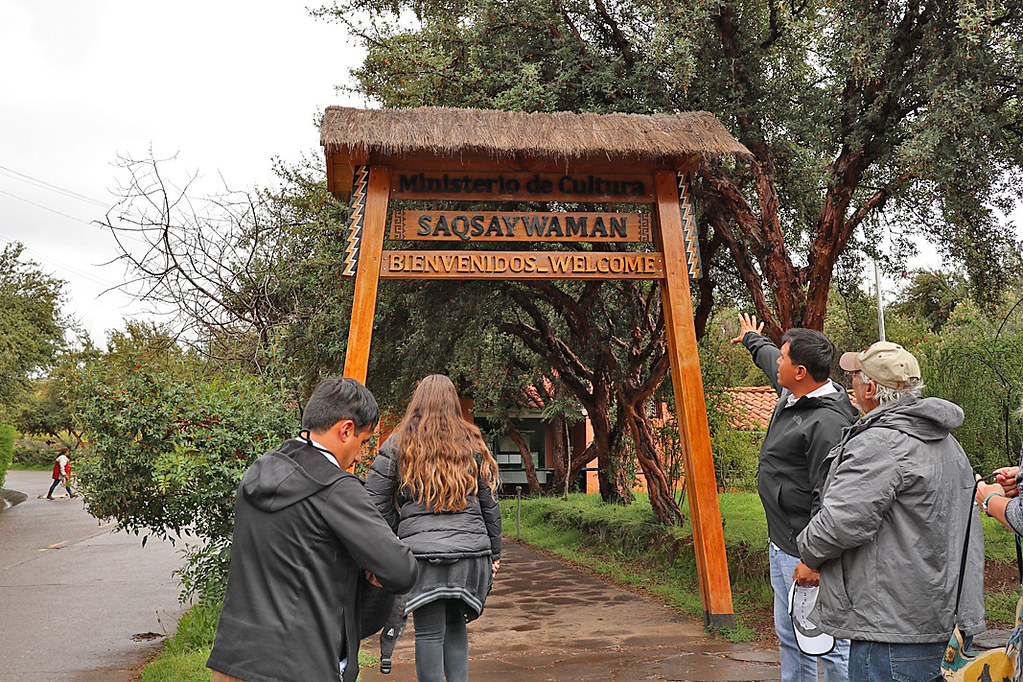
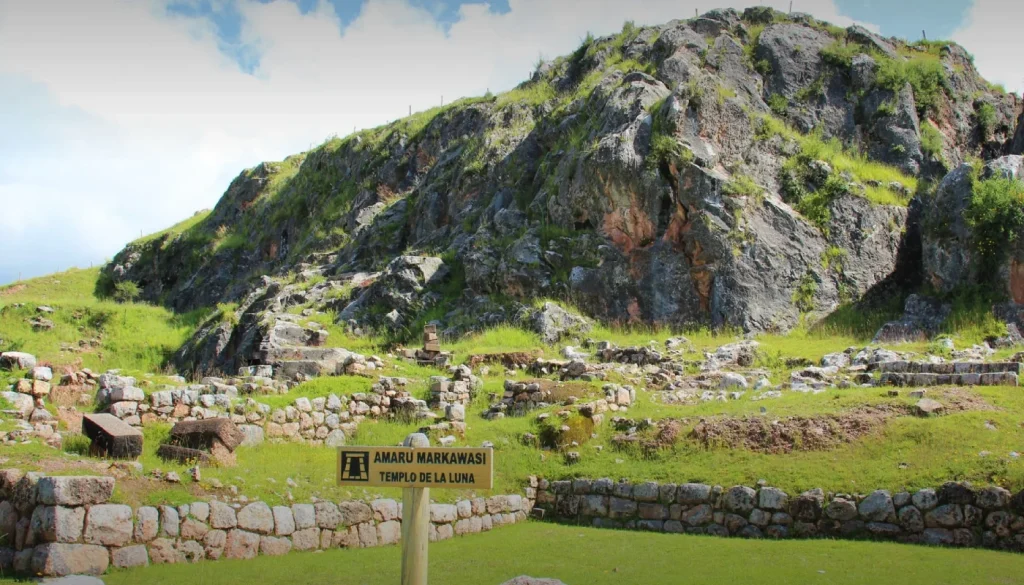
Museums
For cultural immersion, Cusco offers a variety of museums. The Museo Inka provides insight into Inca history and artifacts, while the Pre-Columbian Art Museum highlights regional artistry before Spanish influence. The Museo de Arte Religioso and the Cathedral Museum showcase colonial religious art, and smaller collections like the Coca Museum offer a more thematic perspective.
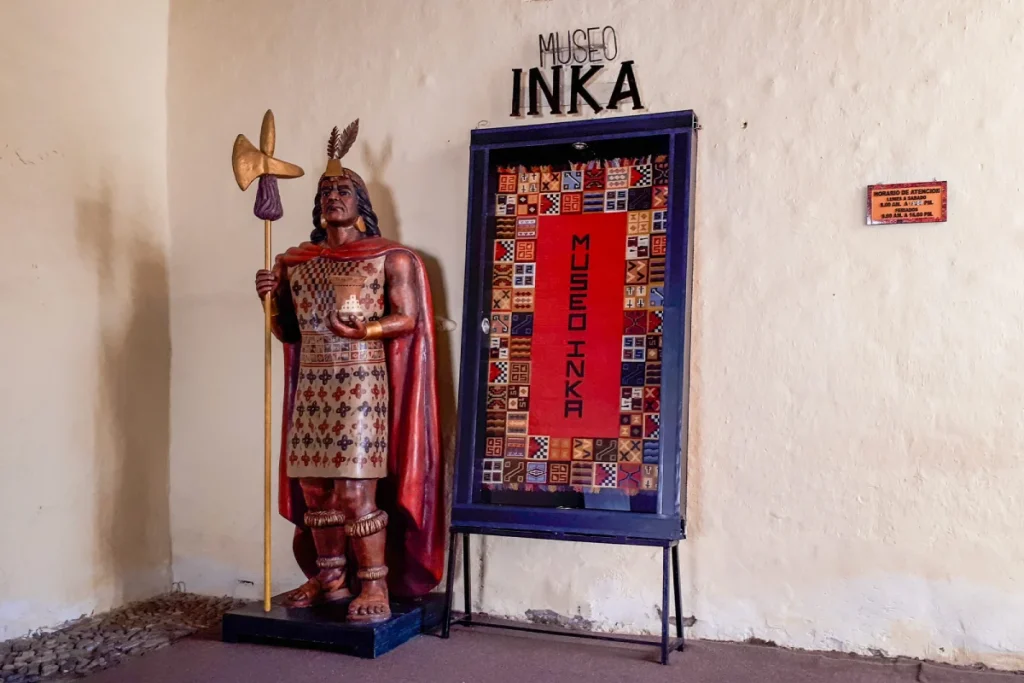
Popular Photo Stops
Cusco is one of the most photogenic cities in South America, with viewpoints and charming streets at every turn. The Plaza de Armas is the classic shot, framed by colonial churches and arcaded balconies. In the San Blas neighborhood, narrow cobbled alleys and whitewashed houses with blue balconies create a postcard-perfect background.
For panoramic views, head up to Cristo Blanco, San Cristóbal Church, or the Mirador de San Blas, each offering different angles of the city and valley. The twelve-angled stone on Hatun Rumiyoc Street is an iconic detail of Inca stonework often photographed by visitors.
Colorful daily life makes the San Pedro Market another lively setting. Beyond the center, the Sacsayhuamán esplanade provides a stunning vantage point with the city spread below, while the Temple of the Moon and surrounding countryside give a more rustic, natural setting.
Sunset from Limbus Restobar or other terraces in San Blas adds a modern, panoramic option with the city lights in the background.
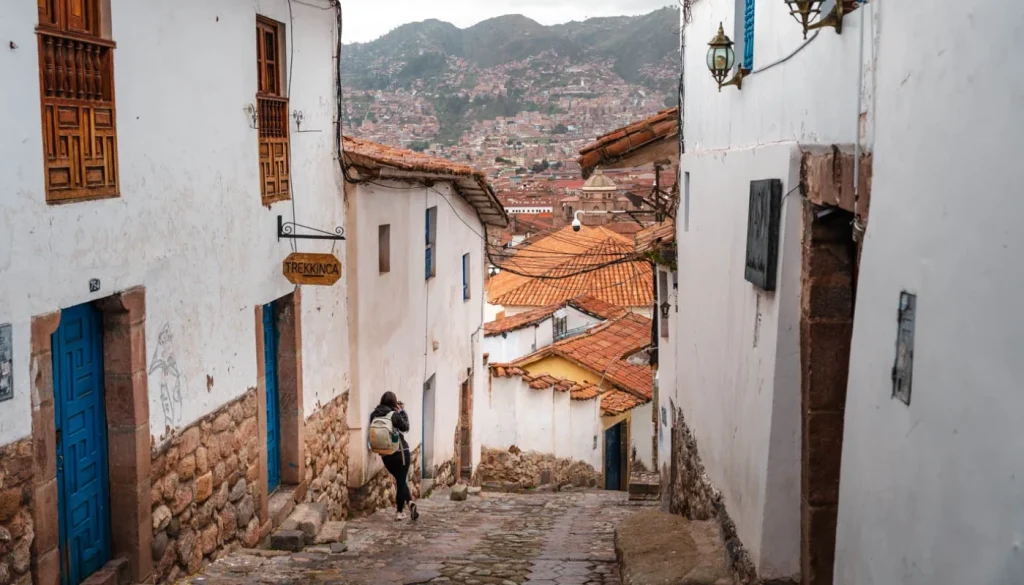
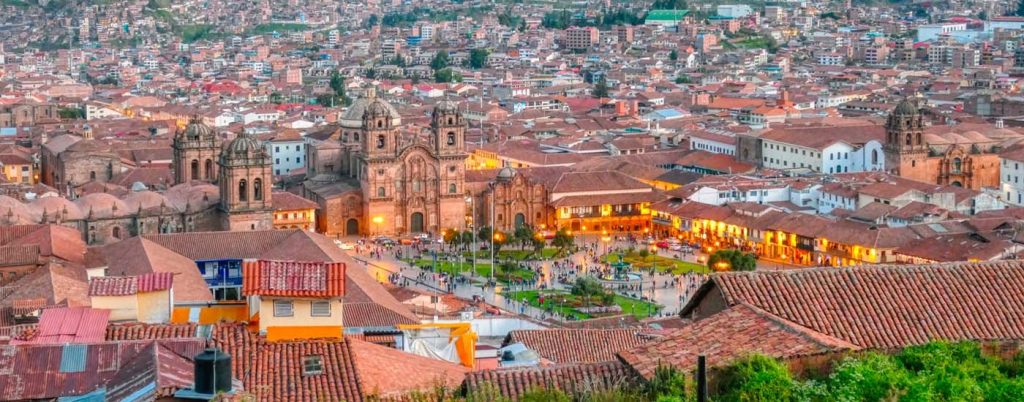
Souvenir Shopping
Cusco is a hub for traditional Andean crafts. The San Pedro Market is ideal for textiles, local food, and daily-life items. For higher quality handicrafts, the Centro de Textiles Tradicionales del Cusco and artisan markets around San Blas are excellent stops, offering alpaca garments, silver jewelry, ceramics, and handwoven textiles. These purchases directly support local communities and preserve ancestral techniques.
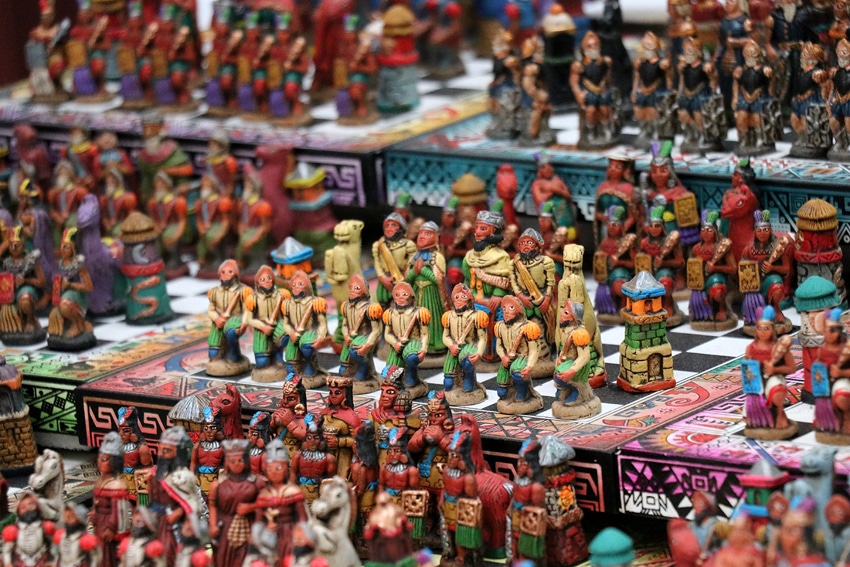
Activities
Top 5 Activities in the City
- Explore the Historic Center: Stroll through the Plaza de Armas, admire colonial churches, and wander San Blas for artisan shops and Inca stonework.
- Visit Museums and Galleries: Learn about Andean history at the Museo Inka, discover regional art at the Pre-Columbian Art Museum, or explore smaller collections like the Coca Museum.
- Join a Culinary Experience: Taste local specialties at San Pedro Market, dine in contemporary Andean restaurants, or take a cooking class with native ingredients.
- Attend a Festival or Cultural Show: Depending on the time of year, experience major celebrations like Inti Raymi or Corpus Christi, or enjoy folk music and dance performances.
- Relax in Cafés and Markets: Take a slower pace at a rooftop café with views over Cusco or shop for souvenirs in artisan markets where textiles and silverwork are showcased.
Top 5 Activities Starting from Cusco
- Day Trip to the Sacred Valley: Visit Pisac, Ollantaytambo, and traditional villages framed by dramatic Andean scenery.
- Hike to Rainbow Mountain (Vinicunca): A colorful, high-altitude trek popular with adventurous travelers.
- Explore the 7 Lakes of Ausangate: A full-day hike offering glacier lakes and breathtaking landscapes with fewer crowds.
- Machu Picchu: From single day tours to multi-day treks into the Citadel, you can visit this marvel in the fashion that suits you better.
- Tipón & South Valley Tour: Visit lesser-known Inca ruins, colonial churches, and enjoy local delicacies like Cusqueñan chicharrón and cuy (guinea pig).
Gastronomy
Top 5 Peruvian & Fusion Cuisine
- Ceviche: Peru’s signature dish adapted for the Andes, often using river trout. Try it at the San Blas Market or LIMO for a more upscale, fusion take.
- Cuy al Horno (Roasted Guinea Pig): A traditional Andean delicacy. Best experienced at Pachapapa in San Blas.
- Lomo Saltado: Stir-fried beef with onions, tomatoes, and soy sauce influence. Cicciolina offers an elegant twist, while Chicha by Gastón Acurio serves a classic rendition.
- Chiriuchu: A festive Cusqueñan dish available mostly during Corpus Christi but also in some traditional eateries. Look for it at Picantería La Cusqueñita or during local food fairs.
- Novo Andean Cuisine: Modern reinterpretations of ancestral ingredients. MAP Café (inside the Pre-Columbian Art Museum) and Mil (by Virgilio Martínez, near Moray) are top references.
Top 5 International Cuisine
- Italian Pizza & Pasta: A Cusco staple with both casual and refined options. Try La Bodega 138 for cozy pizzas.
- Japanese-Peruvian Nikkei: Creative blends of sushi and Peruvian ingredients. LIMO (also known for ceviche) or Kintaro (Japanese-run) are popular spots.
- Vegan & Vegetarian Dining: A growing scene powered by Andean superfoods. Green Point is a traveler favorite.
- Burgers & Steaks: Ideal after long hikes. Jack’s Café is a popular spot for American cuisine with local ingredients, including alpaca; Uchu Peruvian Steakhouse is excellent for grills.
- Middle Eastern & Indian Cuisine: Flavorful options for a change of pace. Paulino’s Indian Cuisine serves authentic Indian curries.
Accommodation
Budget Options
Cusco has a wide variety of hostels and guesthouses ideal for backpackers and budget travelers. Most are concentrated around the San Blas neighborhood and streets within a few blocks of the Plaza de Armas, offering easy access to attractions.
Dorm beds typically cost USD $8-15 per night, while private rooms in budget hotels range from USD $20-35. Popular options include Wild Rover and Viajero Cusco Hostel for social atmospheres, or Hospedaje Turístico Recoleta for a quieter stay.
Standard Options
For mid-range travelers, Cusco offers boutique hotels and well rated 3 or 4-star properties, often located in restored colonial buildings. The historic center around the Plaza de Armas and Av. El Sol is the most common area, balancing comfort with proximity to restaurants and attractions.
Rooms usually range from USD $60-120 per night. Notable choices include Tierra Viva Cusco Centro and Casa Andina Standard, which blend modern amenities with local character.
Luxury Options
Cusco is also home to high end hotels that highlight both colonial charm and top service. Many are found near the Plaza de Armas and historic convents converted into boutique luxury properties. Prices usually start around USD $250-300 per night and can climb to USD $700+ for premium suites.
Standout options include Belmond Hotel Monasterio and Palacio del Inka, both set in historic buildings, and the ultra-luxurious Inkaterra La Casona in San Blas, known for exclusivity and personalized service.
Pro Travel Tips
Where to Book Day Trips and Tours
Cusco’s historic center is filled with travel agencies offering day trips to the Sacred Valley, Rainbow Mountain, Maras & Moray, and more. While it’s possible to book on arrival, tours can also be reserved online in advance for peace of mind, especially during the high season (June-August). Hotels and hostels often partner with trusted agencies, making it easy to arrange activities directly at your accommodation.
The best options for experience, service and price are:
Machu Picchu Tours
When it comes to Machu Picchu, advance planning is crucial. Entry tickets to the citadel and train tickets from Cusco or Ollantaytambo should be purchased weeks or even months ahead, particularly during peak season.
Guided tours can be booked through agencies or directly at the entrance, though having a guide arranged in advance ensures a smoother visit. There are several circuits inside Machu Picchu, each with different routes and viewpoints, so it’s worth reviewing options before choosing.
Currency and Cash Exchange
The local currency is the Peruvian Sol (PEN). While many restaurants and hotels accept cards, smaller shops, markets, and taxis usually operate with cash. Money exchange houses are common around Avenida El Sol and the Plaza de Armas, typically offering better rates than banks or airports. ATMs are also widely available, though withdrawing larger sums at once reduces fees. Always check bills for authenticity before accepting them.
Altitude Adaptation Advice
Cusco sits at 3399 m (11152 ft), and altitude sickness can affect during the first day(s). It’s recommended to rest on the first day, avoid heavy meals, and stay hydrated. Coca tea and infusions made from Muña (Andean mint) are traditional local remedies that may help. Many hotels provide oxygen if needed, and spending a day in the lower altitude Sacred Valley before staying in Cusco is another effective strategy for acclimatization.
FAQS
Absolutely. Cusco is not only the gateway to Machu Picchu but also a destination rich in history, culture, and daily life. Its mix of Inca ruins, colonial architecture, vibrant markets, and festivals makes it one of the most fascinating cities in South America.
A stay of 3-5 days is ideal for most travelers. This allows time to explore the city itself, take a day trip to the Sacred Valley or Rainbow Mountain, and adapt to the altitude before visiting Machu Picchu. Longer stays are rewarding if you want to include multi-day treks or explore lesser known sites.
The Boleto Turístico del Cusco (Tourist Ticket) grants access to many of the city’s main attractions and nearby archaeological sites, including Sacsayhuamán, Qorikancha’s museum, Pisac, and Ollantaytambo. Buying the ticket is usually more economical than paying entry fees separately, and it supports cultural preservation.
Cusco serves as the main starting point for reaching Machu Picchu. From here, travelers typically take a train from Poroy (just outside the city) or from Ollantaytambo in the Sacred Valley, followed by a short bus ride to the citadel. Multi-day treks like the Inca Trail and Salkantay also begin in Cusco, making the city the logistical hub for all Machu Picchu visits.

